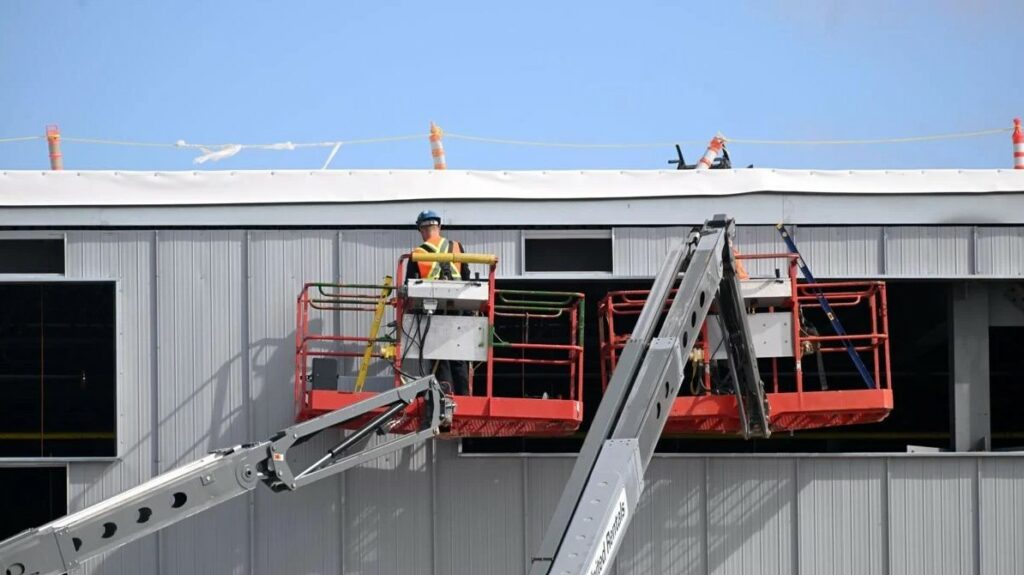Source: The Standard
Despite predicting sluggish economic growth will continue in Niagara into 2025, a new economic outlook for the region isn’t all bad news.
The report, released by the Conference Board of Canada (CBoC) on Monday, predicts the region’s economy will grow by only 0.8 per cent this year, compared to an average of 4.5 per cent in the past three years.
“So yeah, it’s not impressive,” said CBoC economist Viktor Cicman. “But a lot of that is because of the first four or five months of the year.”
He attributed the slow growth to Bank of Canada interest rates, imposed to reduce inflation.
Cicman said Niagara’s economy is following a trend many areas across the country are seeing.
“What we’re noticing is near the tail end of last year we saw the economy slowing down quite a bit, and that’s in St. Catharines, Niagara and also across Canada,” he said.
“The worry is if you increase it (interest rates) too much, all of the sudden people don’t have enough money to spend, and it really pulls back spending — especially in Niagara region where tourism is a major factor.”
But that has begun to change, he added.
“Last week, the Bank of Canada already started to lower rates and they’ll continue on that track for the next few years,” Cicman said. “So going into the end of this year and next year, we see spending coming back. Tourism, which has interestingly held up relatively well, will really come back next year.”
Niagara Economic Development research analysis manager Blake Landry said the region’s economy may be better than the CBoC outlook suggests.
“You have to take it all with a grain of salt,” he said.
Landry said the CBoC report — available for download for $985 — also did not address Niagara’s high level of industrial investment and job creation that has happened in the past few years.
“They don’t really have boots on the ground, so they haven’t included any of the $2.5 billion in new investments that were announced over the last two years,” Landry said.
He said the $1.6-billion investment by Japanese company Asahi Kasei in a battery separator plant in Port Colborne is one of about 24 projects announced in the last two years, “and none of that is reflected in their outlook.”
“All of this stuff is happening, and it’s not reflected in their (CBoC’s) outlook … They’re looking at macroeconomic indicators and it’s important data, however it doesn’t reflect some of the other activities that we’re seeing.”
However, Cicman said CBoC did include most of the recent economic investment in Niagara in its calculations.
“We do have quite a bit of industrial investment occurring. We do have investments in electric vehicle battery production,” he said, referring to recent investments such as Linamar’s “giga plant” in Welland. “We know it’s coming in and it’s going to be quite strong.”
However, he said the region won’t see the full benefit of those investments for a few years.
Although the CBoC’s economic outlook for the region says the region’s manufacturing sector will “be hurt by lower demand for goods both domestically and globally,” it will rebound after 2025 with an average growth rate of 2.6 per cent annually.
“Manufacturing will benefit from a rebound in global demand and from government investment in electric vehicle production. The Regional Municipality of Niagara, for example, is getting $300,000 from the federal government to develop a strategy to support growth in Niagara’s EV sector,” the report said.
Cicman said the outlook shows “quite healthy” long-term growth in the sector, and “a lot of the recent investment has been factored in.”
However, he conceded future growth could be even higher if there are any more investments that were missed in the outlook.
“I think that’s a good sign,” he said.
He said the manufacturing sector “is doing well even while these plants are being built,” and the ongoing development of those industrial facilities is having an immediate impact on construction in Niagara.
“Construction itself is a bright spot, not even just industrial but residential as well.”
He said construction is up an average of 2.9 per cent, and that trend is likely to continue beyond 2025.
Landry said other predictions in the report, such as slowing population growth in Niagara, are “simply not true.”
“There hasn’t been a slow down in population growth,” he said. “The population is booming here, so I don’t know where they’re getting that.”
Cicman, however, said population will continue to grow in Niagara, but at a slower rate than it has been.
He said population growth in the past few years fuelled primarily by immigration “will start slowing down, but it doesn’t mean the population is not still growing.”
“There has already been sort of a cap on how much temporary immigration is allowed starting next year, including international students, and that will definitely start going down,” Cicman said. “But there will still be growth and a lot of inter-city migration. People from regions like the GTA or outside Niagara will still be coming to St. Catharines and Niagara. It’s one of the cities that does have quite high positive inter-city migration.”
However, he said population growth won’t be at the same rate as in past years.
“Housing starts are increasing and there’s still a housing crunch. They still need to be building houses even though we’re not growing at that rate.”
He said the population is expected to reach 485,000 by 2028, compared to 463,000 last year.
“There’s still 20,000 more people expected to come.”
Landry said he is currently developing his own economic outlook for the region, with plans to present it to regional council this fall.

